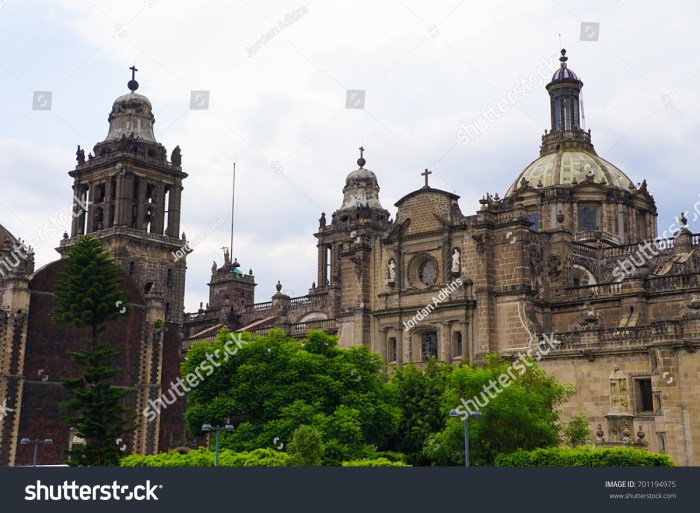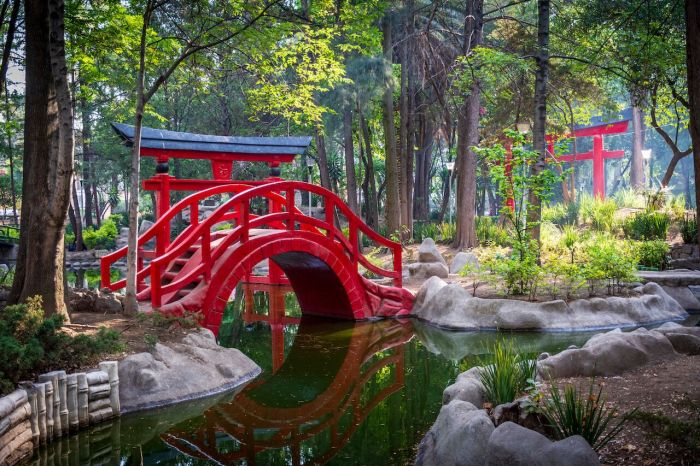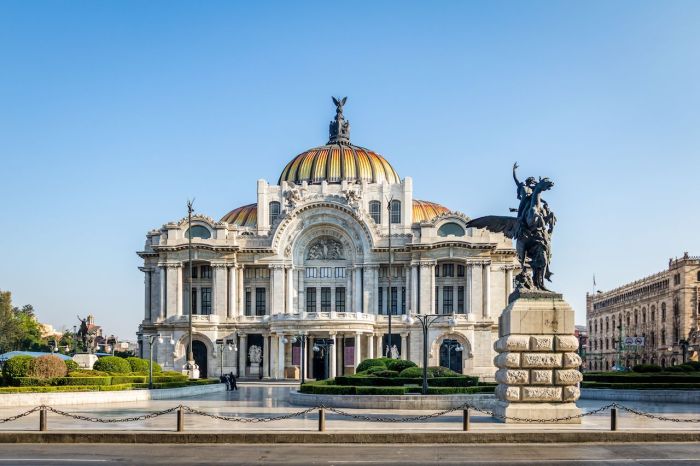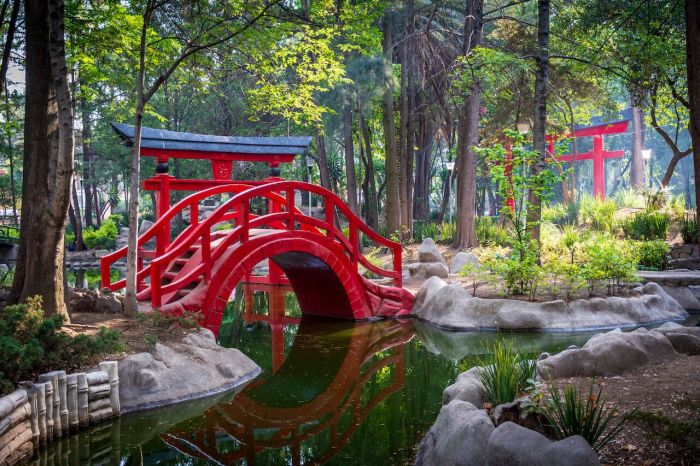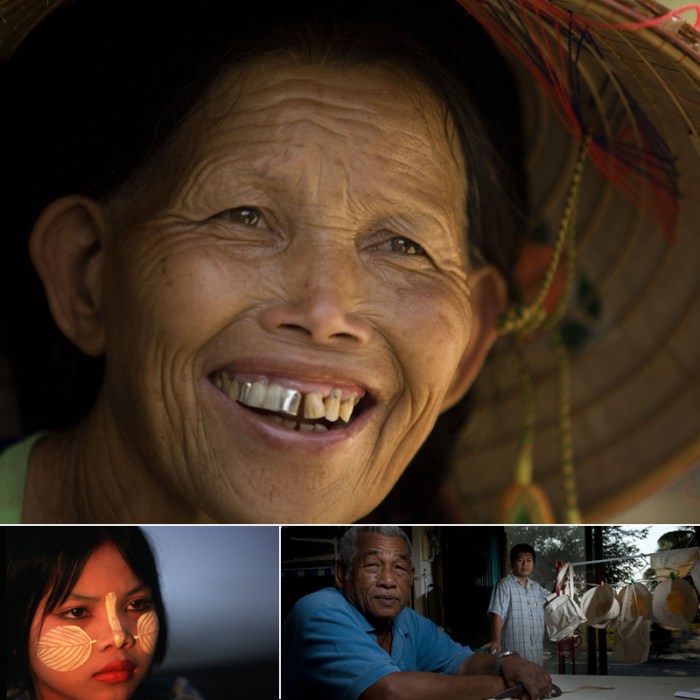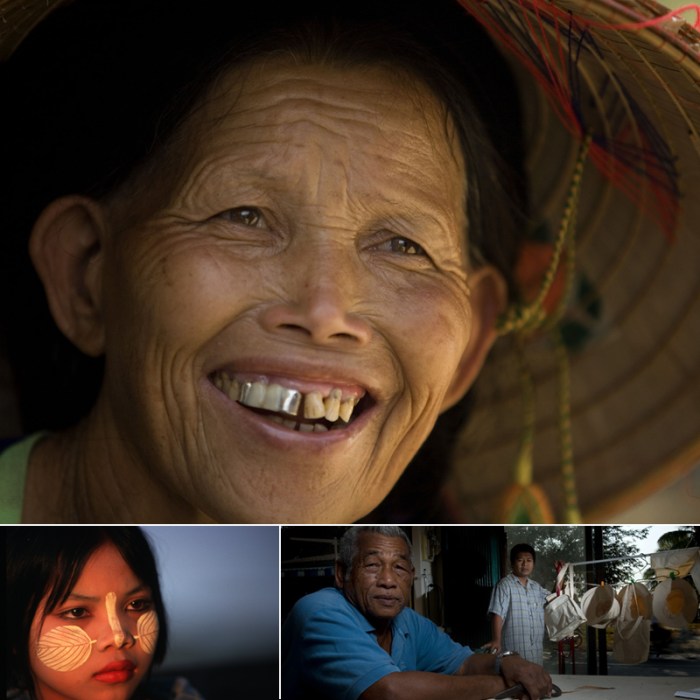Guide to Centro Historico Mexico City: Your Explorer’s Handbook plunges you into the heart of Mexico City’s historical district, a vibrant tapestry woven with centuries of history and culture. From bustling plazas to awe-inspiring museums, this guide unveils the hidden gems and must-see attractions, offering practical tips and insider knowledge for an unforgettable journey. Discover the best times to visit, recommended accommodations, and efficient transportation options.
Learn about essential safety precautions and delve into the rich culinary scene, experiencing traditional dishes and local beverages. Embrace the local culture and traditions, understanding the importance of respecting local customs. Plan your 3-day itinerary and budget, complete with essential Spanish phrases.
Prepare to be captivated by the Centro Histórico’s charm. This meticulously researched guide promises to make your exploration smooth and enjoyable. We’ll guide you through the area’s significant historical landmarks, museums, and plazas, enriching your experience beyond the ordinary tourist trip. Discover the best ways to navigate the city, ensuring your trip is seamless and unforgettable.
Introduction to Centro Historico
The Centro Historico of Mexico City is a vibrant tapestry woven from centuries of history, culture, and architectural splendor. This UNESCO World Heritage site stands as a testament to the city’s rich past, showcasing the fusion of indigenous traditions with Spanish colonial influences. Its well-preserved colonial buildings, bustling plazas, and captivating museums paint a vivid picture of Mexico’s evolution.The Centro Historico exudes an undeniable energy.
The air is alive with the sounds of street vendors, mariachi music, and lively conversations. A unique blend of old-world charm and modern dynamism creates a captivating atmosphere that draws visitors in. Immerse yourself in this sensory experience and embrace the infectious spirit of the city. Respect for local customs is paramount when visiting. Dress modestly, be mindful of local traditions, and engage with the people in a respectful manner.
Historical Significance
The Centro Historico is deeply rooted in the history of Mexico City. Founded on the ruins of the Aztec capital Tenochtitlan, it holds a crucial place in understanding the nation’s development. The Spanish conquest and subsequent colonial period left a significant mark on the architecture and culture of the area, shaping the identity of Mexico. The Centro Historico is a living museum of this history, offering a unique opportunity to step back in time.
Cultural Richness
The Centro Historico is a melting pot of cultural influences. Indigenous traditions and Spanish colonial heritage intertwine seamlessly, creating a rich and diverse cultural landscape. This fusion is evident in the vibrant local markets, the traditional crafts, the delicious cuisine, and the music and dance performances that often fill the plazas. Immerse yourself in the local culture by engaging with the people and experiencing the daily life of the city.
Main Attractions
The Centro Historico boasts a plethora of attractions, catering to diverse interests. Here’s a glimpse into some of the key locations categorized by type.
Museums
The Centro Historico is home to numerous museums, each offering unique insights into Mexico’s past and present. From the National Museum of Anthropology, showcasing Mexico’s rich pre-Hispanic history, to the Palacio de Bellas Artes, a stunning example of Art Deco architecture, each museum offers a captivating journey through time.
- National Museum of Anthropology: A comprehensive collection of artifacts spanning thousands of years of Mexican history, offering a profound understanding of indigenous cultures and their impact on Mexican identity. The museum’s vast collection of artifacts is expertly displayed, guiding visitors through a journey through time and culture.
- Museo Nacional de Historia: Explore the rich history of Mexico, from pre-Hispanic times to the present day. The museum meticulously showcases pivotal moments in Mexican history, from the Spanish conquest to the revolution, using diverse artifacts, exhibits, and historical documents.
Churches
The Centro Historico is dotted with magnificent churches, reflecting the city’s deep Catholic roots. These architectural marvels stand as testaments to faith and artistry, showcasing intricate details and grand scale. Visiting these churches provides a glimpse into the religious significance of the area.
- Metropolitan Cathedral: A stunning example of colonial architecture, the cathedral stands as a testament to the city’s religious heritage, hosting numerous ceremonies and events throughout the year.
- Iglesia de San Francisco: The stunning exterior and interior of the church showcase the artistry and dedication of the past, highlighting the importance of religious architecture in the area.
Plazas
The plazas of the Centro Historico are lively hubs of activity, serving as social and cultural centers. They are the heart of the city, hosting a wide range of events and activities, from traditional markets to outdoor concerts.
- Zocalo: The largest plaza in Mexico City, the Zocalo is a vital cultural hub, hosting numerous events and demonstrations. The square is a popular gathering spot for locals and tourists alike, offering a sense of community and cultural exchange.
- Plaza Garibaldi: Known for its vibrant mariachi music performances, this plaza is a popular destination for those seeking an authentic Mexican experience. The atmosphere is lively and energetic, offering a unique glimpse into the cultural traditions of Mexico.
Practical Information: Guide To Centro Historico Mexico City
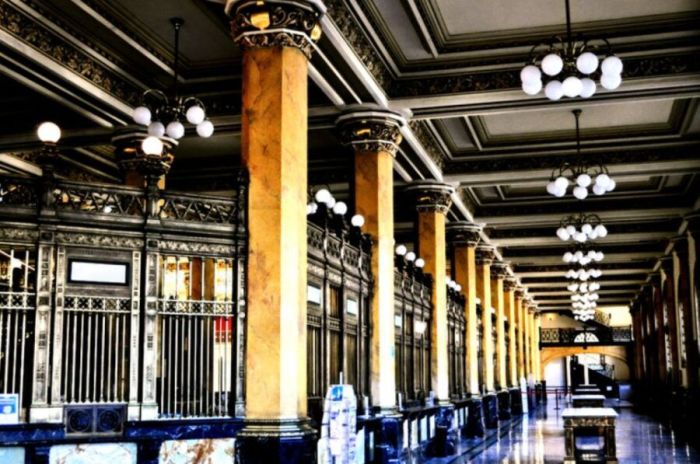
The Centro Histórico offers a rich tapestry of history and culture, but navigating it effectively requires understanding its practical aspects. From choosing the optimal time to visit to selecting the right mode of transportation, careful planning enhances your experience. This section provides crucial information for making the most of your exploration.
Best Time to Visit
The best time to visit the Centro Histórico is during the spring (March-May) and fall (September-November) seasons. These shoulder seasons offer pleasant temperatures, avoiding the scorching heat of summer and the chilly winds of winter. Crowds are generally moderate during these periods, allowing for a more relaxed and enjoyable exploration of the historical sites. Summer months can be extremely hot, leading to discomfort and potentially larger crowds, while winter months might see fewer tourists but with potentially unpleasant weather conditions.
Accommodation Recommendations
The Centro Histórico boasts a wide range of accommodations to suit various budgets. For luxury options, consider hotels like the Hotel Boutique Casa de los Azulejos or the Hotel Sofitel Mexico City Centro Histórico. Mid-range choices include the Hotel Emperador and the Hotel Nacional. Budget-friendly options include hostels like the Selina Mexico City Centro Histórico or Airbnb apartments in the neighborhood.
The proximity to the historical sites is a significant advantage, allowing for easy access to attractions.
Transportation Options
Navigating the Centro Histórico is best done using a combination of methods. Walking is an excellent way to soak in the atmosphere and discover hidden gems. The metro system provides efficient and affordable transportation to reach various parts of the city, including the Centro Histórico. Taxis and ride-sharing services are also available, offering convenience for longer distances or specific needs.
Transportation Comparison
| Transportation | Cost | Time | Convenience |
|---|---|---|---|
| Walking | Free | Variable | High |
| Metro | Low | Fast | Medium |
| Taxi | Moderate | Variable | High |
| Ride-sharing | Moderate | Variable | High |
This table summarizes the key characteristics of each transportation method. The cost is relative to the other methods; the time varies based on the destination, and convenience is evaluated based on personal preferences. For instance, while walking is free and offers a great way to experience the city, it can be time-consuming for long distances. The metro, while fast and affordable, may not be the most convenient for every destination within the Centro Histórico.
Safety Precautions
Tourist safety is paramount when visiting the Centro Histórico. Be mindful of your surroundings, especially in crowded areas. Avoid displaying expensive jewelry or electronics. Use reputable taxis or ride-sharing services, and ensure you have a copy of your important documents. Inform someone of your itinerary and estimated return time.
Trust your instincts and report any suspicious activity to local authorities. Prioritize personal safety by being aware of your surroundings, taking precautions, and communicating with others.
Must-See Attractions
Stepping into Mexico City’s Centro Histórico is like stepping back in time. The cobblestone streets, vibrant colors, and towering historical buildings whisper tales of empires and revolutions. This section will delve into some of the most captivating attractions, offering a glimpse into the city’s rich past and present.
Metropolitan Cathedral
The Metropolitan Cathedral, a magnificent example of Baroque architecture, stands as a testament to the city’s colonial heritage. Its facade, adorned with intricate carvings and sculptures, is a breathtaking display of artistry. Inside, the vast interior boasts stunning altars, exquisite religious artwork, and a serene atmosphere that invites contemplation. The cathedral’s construction, spanning several decades, reflects the meticulous craftsmanship and devotion of generations of artisans.
It served as a central hub for religious life and witnessed countless significant events in the city’s history.
Museo Nacional de Antropología
This renowned museum houses an impressive collection of pre-Hispanic artifacts, providing a profound understanding of Mexican history and culture. The museum’s vast collection spans various civilizations, from the Olmecs to the Aztecs, offering visitors an immersive journey through time. The meticulously crafted exhibits showcase exquisite pottery, intricate carvings, and ceremonial objects, offering a glimpse into the daily lives, beliefs, and artistic traditions of these ancient societies.
The layout and organization of the exhibits are carefully designed to facilitate a smooth and enriching learning experience.
Table of Popular Museums, Guide to centro historico mexico city
| Museum | Collection | Exhibit Focus | Description |
|---|---|---|---|
| Museo Nacional de Antropología | Pre-Hispanic artifacts, including pottery, carvings, and ceremonial objects | Mexican history, culture, and artistic traditions, from the Olmecs to the Aztecs | A large, comprehensive collection, beautifully presented in a well-organized manner. It provides a rich and immersive experience, offering visitors a profound understanding of the history of the region. |
| Museo de Arte Moderno (MAM) | 20th and 21st-century Latin American and international art | Modern and contemporary art, with a focus on Latin American artistic movements | Presents a diverse collection of paintings, sculptures, and installations by renowned artists from across the globe, highlighting the evolution of artistic styles in the 20th and 21st centuries. |
| Museo Soumaya | Collection of Spanish and European art | European art from the Middle Ages to the present | Houses a collection of masterpieces from Spanish and European artists, spanning various eras and styles. |
Zócalo
The Zócalo, a vast plaza, serves as the heart of Mexico City’s Centro Histórico. It’s a significant historical site, having witnessed countless pivotal moments in the nation’s history. Surrounding the plaza are notable monuments, including the Metropolitan Cathedral and the National Palace, both of which bear witness to the city’s rich past. The Zócalo’s presence is deeply intertwined with the city’s political and social life.
It remains a vibrant hub for public gatherings, demonstrations, and celebrations.
Mercado de San Juan
The Mercado de San Juan, a bustling market, offers a captivating glimpse into local life. Its colorful stalls display an array of fresh produce, artisanal crafts, and local delicacies. The market’s vibrant atmosphere and the diverse range of products sold make it a sensory experience. It’s not just a marketplace; it’s a cultural hub, a place where the pulse of the city is palpable.
The lively interaction between vendors and shoppers, and the rich aromas of exotic fruits and spices, create a truly unforgettable ambiance.
Culinary Experiences
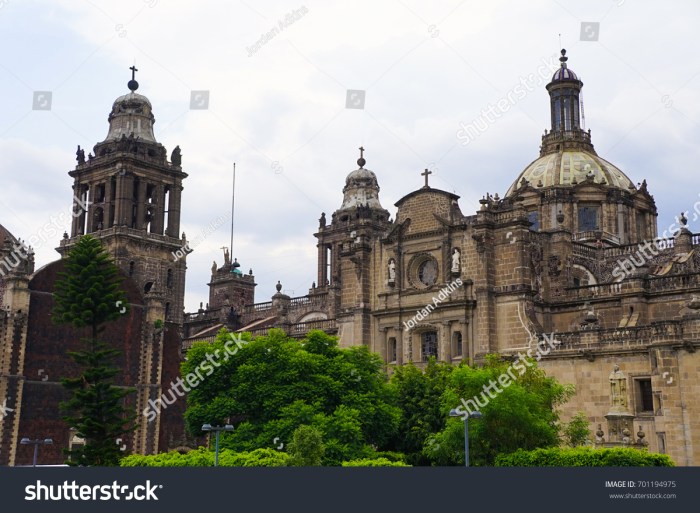
Discovering the heart of Mexico City’s Centro Historico means embracing its vibrant culinary scene. Beyond the iconic landmarks, a world of flavors awaits, offering a journey through traditional Mexican cuisine. From the rich aromas of freshly prepared dishes to the warmth of family-run restaurants, every bite tells a story. This exploration will delve into the diverse culinary landscape, showcasing the region’s specialties and cultural significance.The Centro Historico is a treasure trove of culinary delights.
The area’s rich history has shaped its cuisine, creating a unique blend of indigenous ingredients and colonial influences. Restaurants in this historical district often feature generations of family recipes, passed down through generations. Exploring these restaurants is a way to connect with the local culture and experience authentic Mexican flavors.
Traditional Mexican Restaurants
The Centro Historico boasts a diverse array of restaurants, each offering a unique culinary experience. Finding authentic Mexican cuisine is easy, with various options catering to different palates. Look for restaurants with a local atmosphere and visible evidence of traditional Mexican dishes. Many restaurants feature family recipes and are committed to providing traditional experiences.
Local Specialties
The Centro Historico offers a wide array of delicious local specialties. Here’s a glimpse into some of the must-try dishes:
| Dish | Description | Origin | Image Description |
|---|---|---|---|
| Mole Poblano | A rich, complex sauce, typically made with chilies, spices, and chocolate, often served with chicken or turkey. | Puebla | A vibrant, dark sauce with chunks of tender chicken or turkey, resting atop a bed of rice or tortillas. The sauce is thick and glossy, showcasing a mix of warm, deep colors. |
| Tacos al Pastor | Marinated pork cooked on a vertical rotisserie, served in warm corn tortillas. | Mexico City | Tender, flavorful pork, glistening with a sweet and savory marinade, is arranged on warm corn tortillas. The tortillas are soft and slightly charred from the grilling process. |
| Tlacoyos | Corn tortillas filled with various ingredients like cheese, beans, or vegetables, and cooked on a comal. | Mexico | Soft, round corn tortillas, filled with a mix of colorful fillings, such as refried beans, cheese, and vegetables. The tortillas are cooked on a flat griddle, giving them a slightly charred exterior. |
Mexican Beverages
Mexican beverages are deeply intertwined with the nation’s culture. These drinks often accompany meals and social gatherings, playing a significant role in the social fabric.
- Agua fresca:
- Horchata:
- Mexican Coffee:
Refreshing fruit-infused water, often made with watermelon, pineapple, or hibiscus. It is a popular thirst quencher and a light, healthy option, especially in the warmer months.
A creamy, milky beverage made from rice, cinnamon, and vanilla. Its smooth texture and subtle sweetness make it a comforting and flavorful choice, often enjoyed with snacks.
A strong, dark roast coffee, often served with condensed milk. The combination of bold coffee and sweet condensed milk is a popular way to enjoy a rich and flavorful coffee drink.
Traditional Mexican Dish Preparation
Traditional Mexican dishes are often prepared using a combination of techniques and ingredients, drawing upon both pre-Hispanic and colonial influences. Many recipes are passed down through generations, preserving cultural heritage and culinary traditions.
My guide to Mexico City’s Centro Histórico is packed with tips, but I’m also loving the vibrant energy of Japan! If you’re looking for a fascinating alternative, checking out the top things to do in Yokohama here is a great way to experience a different culture. Ultimately, though, my guide to the Centro Histórico will show you the best of Mexico City’s historic heart.
- The use of fresh, local ingredients is vital to the preparation of traditional Mexican dishes.
- The preparation process frequently involves hand-to-hand mixing, creating a sensory experience that blends culture and food.
- Many dishes rely on traditional cooking methods, like grilling on a comal or slow-cooking in a cazuela.
Local Culture and Traditions
Stepping into the Centro Histórico of Mexico City is like stepping back in time, a journey through centuries of vibrant culture and tradition. The city’s heart pulsates with a unique energy, a blend of ancient Aztec heritage and Spanish colonial influence, deeply woven into the fabric of daily life. This area is more than just buildings; it’s a living, breathing testament to Mexico’s rich past.The Centro Histórico is not merely a collection of historical landmarks; it’s a living museum of local crafts and traditions.
My guide to the Centro Histórico in Mexico City is almost ready! It’s packed with tips for navigating the vibrant streets and hidden plazas. While researching, I stumbled upon news about the reopening of Largo di Torre Argentina in Rome, rome largo di torre argentina open , which reminded me of the beautiful squares in the Centro Histórico.
I’ll be sure to include some comparison points in the guide to inspire you to explore beyond the obvious.
The spirit of these traditions lives on through the work of local artisans, the celebrations that fill the streets, and the respect for the customs that have shaped the community for generations.
Local Crafts and Artisans
The Centro Histórico is renowned for its skilled artisans, preserving and passing down traditional crafts. From intricate pottery and textiles to meticulously carved wooden figurines, these artisans create pieces that are both beautiful and deeply meaningful. They are a vital part of the local economy and culture, ensuring the continuity of traditional techniques and artistry. Their work often reflects the area’s history and mythology, adding a layer of depth and cultural significance to each piece.
Local Celebrations and Festivals
The Centro Histórico calendar is filled with vibrant celebrations, each imbued with deep cultural significance. These festivals, from religious processions to traditional dances and music performances, are integral to the community’s identity. The celebrations often involve elaborate costumes, vibrant decorations, and community participation, showcasing the area’s rich cultural heritage. Examples include the Day of the Dead festivities, with their elaborate altars and traditions, or the numerous religious processions honoring patron saints.
These events are opportunities to connect with the city’s history and experience the unique energy of the community.
Respecting Local Customs and Traditions
Visiting the Centro Histórico is an enriching experience, offering a chance to immerse yourself in local culture. Respecting local customs and traditions is crucial to a positive and meaningful visit. This involves being mindful of local etiquette, observing religious practices, and engaging respectfully with the community. For instance, dressing modestly when visiting religious sites is a sign of respect.
Asking permission before taking photographs of individuals or important sites is another important aspect of showing respect. Learning a few basic Spanish phrases can also demonstrate your appreciation for the local culture.
Recommended Shops for Souvenirs and Local Products
Numerous shops in the Centro Histórico offer authentic souvenirs and local products, allowing visitors to take a piece of the city’s culture home with them. These shops offer a wide variety of goods, from handcrafted pottery and textiles to traditional Mexican crafts and artwork.
My guide to the Centro Historico in Mexico City is packed with tips for exploring the amazing architecture and vibrant culture. But if you’re looking for a truly unforgettable way to experience the world, consider a luxury cruise like those offered by Regent Seven Seas Cruises or Grand Voyages. These grand voyages offer incredible opportunities to see stunning destinations, and, if you’re looking for a trip to remember, I highly recommend checking out the details on cruises regent seven seas cruises grand voyages.
Once you’ve returned, you can always come back to my guide to make the most of your trip to the historic center.
- El Carmen neighborhood: Known for its vibrant street markets and artisan workshops, providing a great opportunity to find unique souvenirs and support local craftspeople.
- Shops around the Zócalo: Many small shops and stalls surrounding the Zócalo offer a diverse selection of local products, including ceramics, textiles, and jewelry.
- Artisanal workshops in the San Juan market: Many artisans set up workshops in the San Juan market, allowing visitors to interact directly with the artists and learn about the creation process.
Planning Your Trip
Embarking on a journey to Mexico City’s Centro Histórico requires careful planning to make the most of your time and budget. This section will provide a roadmap for crafting an unforgettable experience, covering essential details like sample itineraries, estimated costs, and practical tips for navigating the city.
Sample 3-Day Itinerary
This itinerary balances iconic sights with local experiences, offering a taste of the Centro Histórico’s rich tapestry.
- Day 1: Arrival and Zócalo Exploration. Arrive at the airport, transfer to your accommodation, and then head to the Zócalo, the heart of the city. Explore the surrounding plazas, admire the Metropolitan Cathedral, and immerse yourself in the vibrant atmosphere. For dinner, savor traditional Mexican cuisine at a local restaurant near the Zócalo, such as El Cardenal or La Puerta del Cielo.
- Day 2: History and Art. Visit the National Museum of Anthropology, marveling at the impressive collection of pre-Columbian artifacts. In the afternoon, explore the Palacio de Bellas Artes, known for its stunning architecture and art exhibitions. Enjoy a delicious dinner at a restaurant in the Roma Norte neighborhood, renowned for its diverse culinary scene.
- Day 3: Cultural Immersion and Departure. Begin the day with a visit to the Templo Mayor, a significant archaeological site. Explore the surrounding shops and artisan stalls for souvenirs. Enjoy a final traditional Mexican meal before transferring to the airport for your departure.
Detailed Budget
This budget provides a framework; actual costs may vary depending on your choices and travel style.
| Category | Estimated Cost (USD) |
|---|---|
| Accommodation (3 nights) | $150-$300 |
| Food (3 days) | $150-$250 |
| Transportation (metro, taxis) | $50-$100 |
| Activities (museums, tours) | $100-$200 |
| Souvenirs | $50-$100 |
| Total Estimated Budget | $500-$900 |
Maximizing Your Time
To make the most of your trip, consider these tips:
- Purchase a Mexico City Metro card for convenient and affordable transportation.
- Book museum tickets online in advance to avoid long queues.
- Wear comfortable shoes, as you’ll be doing a lot of walking.
- Learn a few basic Spanish phrases for easier communication.
- Be mindful of your belongings in crowded areas.
Essential Spanish Phrases
Knowing a few basic phrases can enhance your interactions with locals.
¡Buenos días! (Good morning)
¡Buenas tardes! (Good afternoon)
¡Buenas noches! (Good evening/Good night)
Gracias (Thank you)
Por favor (Please)
Disculpe (Excuse me)
¿Cuánto cuesta? (How much does it cost?)
¿Habla inglés? (Do you speak English?)
Last Point
Embark on a captivating journey through Mexico City’s Centro Histórico, a testament to Mexico’s rich heritage. This comprehensive guide provides a framework for an immersive and insightful exploration. From historical insights to practical tips, this resource empowers you to make the most of your trip, ensuring an enriching experience steeped in history, culture, and delicious food. Remember to respect the local customs and traditions as you delve into the vibrant heart of Mexico City.
